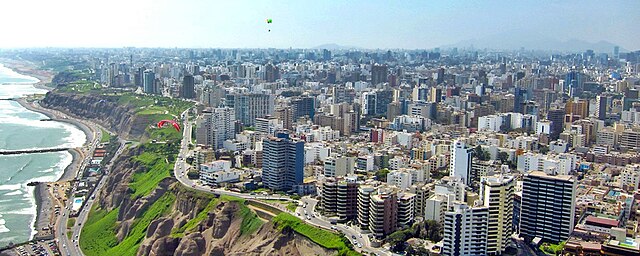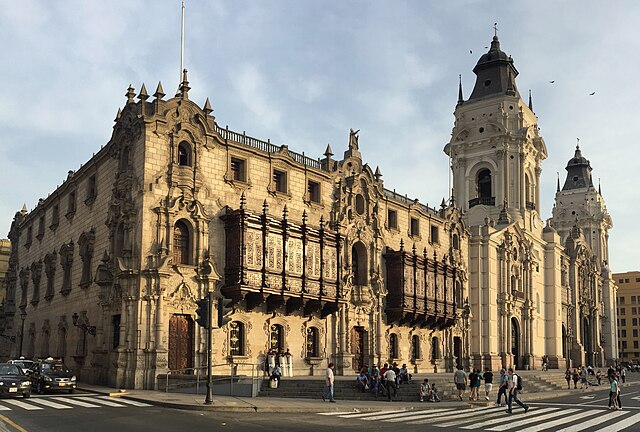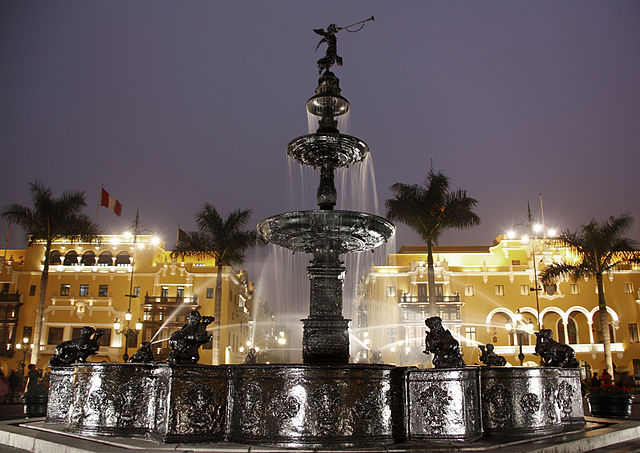Pachacámac is an archaeological site 40 kilometres (25 mi) southeast of Lima, Peru in the Valley of the Lurín River. The site was first settled around A.D. 200 and was named after the "Earth Maker" creator god Pacha Kamaq. The site flourished for about 1,300 years until the Spanish invaded. Pachacamac covers about 600 hectares of land.
anthropomorphic bird on a Huari pot
15th century Ychsma textile, from Peru's central coast
Inca priests accompanied by the Virgins of the Sun during a religious ceremony in Pachacamac
Pachacamac ruins, 2014
Lima, founded in 1535 as the Ciudad de los Reyes, is the capital and largest city of Peru. It is located in the valleys of the Chillón, Rímac and Lurín Rivers, in the desert zone of the central coastal part of the country, overlooking the Pacific Ocean. The city is considered the political, cultural, financial and commercial center of Peru. Due to its geostrategic importance, the Globalization and World Cities Research Network has categorized it as a "beta" tier city. Jurisdictionally, the metropolis extends mainly within the province of Lima and in a smaller portion, to the west, within the Constitutional Province of Callao, where the seaport and the Jorge Chávez Airport are located. Both provinces have regional autonomy since 2002.
Image: Ciudad De Lima
Image: Basílica Catedral Metropolitana de Lima (cropped)
Image: Urban View of Lima, Peru 09 (Night City)
Image: Parque de La Reserva, Lima Peru panoramio (7)








